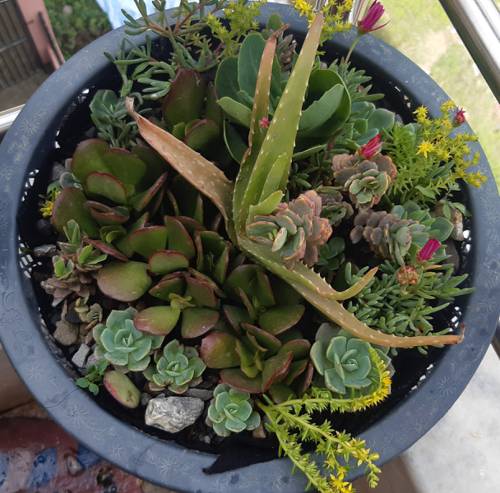
FAQ About Indoor Plant Detoxifying Varieties

What are the benefits of having detoxifying indoor plants?
Detoxifying indoor plants offer numerous benefits, including improving air quality by removing toxins, releasing oxygen, and regulating humidity levels. They can help reduce stress, enhance mood, and even boost productivity. Furthermore, these plants can make living spaces aesthetically pleasing and bring a touch of nature indoors.

Which indoor plants are considered the best for detoxifying the air?
Certain indoor plants are renowned for their air purifying capabilities. Notable examples include the Peace Lily, Snake Plant, Spider Plant, Aloe Vera, and English Ivy. These plants are effective at removing common indoor pollutants like benzene, formaldehyde, and trichloroethylene.

How do indoor plants detoxify the environment?
Indoor plants improve air quality through the process of photosynthesis, where they absorb carbon dioxide and release oxygen. More importantly, certain plants can absorb harmful pollutants through their leaves and roots, transforming them into less harmful substances. The microorganisms in the soil also play a role in breaking down these compounds.

Is it true that all indoor plants are effective at detoxifying air?
Not all indoor plants are equally effective at detoxifying the air. While many plants contribute to a healthier environment by producing oxygen, only certain varieties have been scientifically studied and shown to effectively remove significant amounts of indoor pollutants.

How often should I water detoxifying indoor plants?
The frequency of watering depends on the specific plant species. Generally, most detoxifying indoor plants like to be kept slightly moist but not waterlogged. It is important to check the soil moisture regularly and adjust watering accordingly to prevent root rot.

Can detoxifying indoor plants help with allergies?
While detoxifying indoor plants can help improve air quality by removing pollutants and increasing humidity, they may not directly alleviate allergies. However, cleaner air can reduce allergy triggers in the environment, potentially providing some relief to allergy sufferers.

Are there any indoor plants that are particularly good at removing formaldehyde?
Yes, certain plants are effective at removing formaldehyde from the air. The Boston Fern, for instance, is particularly capable of removing this specific pollutant, in addition to Bamboo Palm and Snake Plant.

How should I care for a Snake Plant as a detoxifying plant?
Snake Plants are low-maintenance and thrive in indirect sunlight. Water sparingly, allowing the soil to dry between waterings, as these plants prefer drier conditions. They are excellent air purifiers, effective at removing toxins like formaldehyde and benzene.

Do detoxifying indoor plants need special soil to purify air effectively?
Detoxifying indoor plants do not generally require any special soil to purify air. However, well-drained, nutrient-rich potting mix can promote healthy growth and optimal air purification. It is also important to ensure good drainage to prevent waterlogging.

Can I use detoxifying indoor plants in every room?
Yes, detoxifying indoor plants can be placed in any room of your home, as long as the conditions are suitable for the plants' specific needs. Consider factors such as light, humidity levels, and temperature to ensure plants thrive and effectively purify the environment.

What are some low-light detoxifying indoor plants?
There are several detoxifying plants that can thrive in low-light conditions, including the Snake Plant, English Ivy, and Pothos. These plants are ideal for rooms with less natural light and are still effective at improving air quality.

How can indoor plants improve humidity in my home?
Indoor plants can help increase humidity through a process called transpiration, where they release moisture into the air from their leaves. This added humidity can be beneficial, particularly in dry indoor environments, helping reduce skin irritation and respiratory issues.

Are detoxifying indoor plants safe for pets?
Not all detoxifying indoor plants are safe for pets, as some can be toxic if ingested. Species such as Peace Lilies and English Ivy pose risks to cats and dogs. It's important to research and choose non-toxic plants like Spider Plants or Bamboo Palm if you have pets.

How many detoxifying plants do I need for effective air purification?
The number of detoxifying plants needed for effective air purification depends on the size of the space and the level of pollutants present. NASA suggests having at least one plant per 100 square feet for optimal air purification. However, more plants can enhance the effect.

What are common indoor toxins that these plants can remove?
Detoxifying indoor plants can remove a variety of common indoor pollutants, including formaldehyde, benzene, trichloroethylene, xylene, and ammonia. These chemicals are often found in household products and building materials.

Can detoxifying indoor plants improve mental health?
There is evidence suggesting that having indoor plants can improve mental health by reducing stress, boosting mood, and enhancing concentration. The presence of nature indoors can create a calming and restorative environment, contributing to overall well-being.

What is the best way to clean the leaves of detoxifying plants?
To maintain their efficiency, regularly clean the leaves of detoxifying plants by gently wiping them with a damp cloth to remove dust and dirt. This helps ensure the plant can effectively photosynthesize and absorb pollutants.

Are there any detoxifying indoor plants that also produce flowers?
Yes, some detoxifying indoor plants produce flowers, adding beauty along with their air-purifying benefits. Peace Lilies are well-known for their white blooms and also excel in removing toxins like ammonia and formaldehyde from the air.

How do I know if my detoxifying plants are healthy?
Healthy detoxifying plants usually have vibrant, firm leaves and steady growth. Signs of poor health include yellowing leaves, wilting, or stunted growth. Ensure they receive proper light, water, and nutrients, and check for pests to maintain their health.

Can detoxifying indoor plants help reduce indoor odors?
Yes, detoxifying indoor plants can help reduce indoor odors by neutralizing volatile organic compounds, improving air circulation, and releasing oxygen. Species like the Spider Plant and Bamboo Palm are particularly effective at mitigating unpleasant smells.
